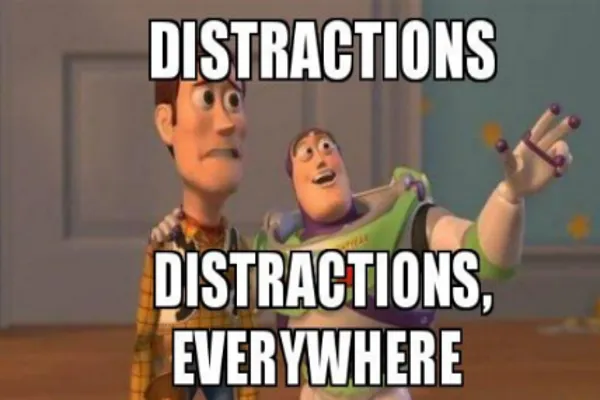
Distraction Management: Your Guide to Staying Focused and- SQUIRREL
I live my life as a Pixar Character – specifically Dory or Dug the Dog. I get so distracted! I flit from one task to another, never really completing any task fully. I get distracted by the cup that I bring to the kitchen and then see the mail I haven’t opened, and leave the envelope on top of the washer because I am finishing laundry. Can anyone else relate?
Even while driving or sitting at a red light, people are texting, scrolling socials, or watching laughing baby TikToks. Learning how to manage distractions is increasingly more important. Sometimes we blame our busy schedules, our ADHD, or our family responsibilities. Let's focus on understanding distraction a bit more and add in practical tips to control distraction instead of allowing it to control us.
Question 1: “What is causing me to be so easily distracted?”
Picture your brain as a super-high-tech laptop with about 42 tabs open at once. Some are essential—like the one running your work tasks and family schedules—while others are just random cat videos or an urgent need to reorganize your sock drawer. Here’s the deal: distractions are often the result of overstimulation. Our brains are bombarded with stimuli from all directions, making it easy to lose focus.
Actionable Step: Schedule “Distraction Time”
Yes, you heard that right. Allocate specific times in your day to indulge in distractions—maybe 15 minutes in the afternoon to scroll through social media or binge-watch a few cat videos. This way, you give your brain a structured break and keep it from hijacking your productivity. Just be sure to stick to the schedule; otherwise, you’ll find yourself in a never-ending scroll of kitten cuteness.
Question 2: “How do I get motivated to do any task I’m procrastinating on?”
Procrastination can feel insurmountable. Often we procrastinate because we dislike the feelings around the task we are trying to get done. Thoughts of sitting for 4 hours to write a historic essay on some old dead guy doesn’t bring feelings of joy and excitement. So we put it off till the night before and convince ourselves that we work great under pressure with a ton of energy drinks. Procrastination isn’t the issue. Sometimes, you need a better system.
Actionable Step: Simple Steps and Systems
The hardest part is often getting started. I have to set a timer for 10 minutes to tackle the worst chore in my house (dishes!). This gives me a set time limit to focus on 1 task. I get to stop when the timer goes off, guilt-free (and 98% of the time, I finish all the dishes).
Sometimes if a task is so big and overwhelming, it is smart to break it into smaller steps—something manageable over time. Then (most importantly) it helps to reward yourself! Incentives can provide a motivation boost you need to tackle tasks. 1 hour of studying = 30 min of guilt-free scrolling or a favorite show.
Question 3: “How do I handle digital distractions?”
Ah, digital distractions—the modern plague. With notifications dinging, emails popping up, and the siren call of endless social media feeds, staying focused can feel like trying to swim upstream in a river of digital chaos.
Actionable Step: Implement the “Tech Triage”
Although I’d love to recommend turning off ALL notifications, I recognize that that may not be feasible or desirable. Science suggests that it takes up to 20-25 minutes to get back on a task once distracted and reach the same level of productivity and focus as before the interruption. Consider how often your phone pings, sings, or your watch buzzes, pulling your attention. This is known as “resumption lag” and highlights the cost of switching tasks. Your brain then needs to refocus and re-engage with the original task, which leads to loss of time and can be mentally taxing.
Consider the Pomodoro Technique of working for 25 minutes and then taking a break. During work time, keep your phone on “Do Not Disturb” or put it in a drawer or different room. You can also create specific times to use your phone—9am and 1pm for checking email, lunch and after dinner for social media. This allows you to stay focused on your tasks because you have carved out time for digital space instead of letting them hijack your attention whenever they please.
Wrapping Up: The Distraction Management Playbook
I may always get distracted, there is so much that steals focus; however, I will also always have systems that improve my focus and help me successfully maneuver around distractions. By understanding the reason you’re distracted, how to create systems for motivation and action, and handling digital interruptions, you’ll be on your way to mastering the art of focus a little bit more.
So, the next time you find yourself lost in the abyss of your to-do list, take a deep breath, re-evaluate your focus strategies, and get back to conquering your tasks. If all else fails, just remember: cat videos are always there for you—scheduled distraction time or not.
I would love to speak with you on a complimentary strategy call to discuss how you can live your life more fully and with greater intention.
Your coach,
Mai Lee

